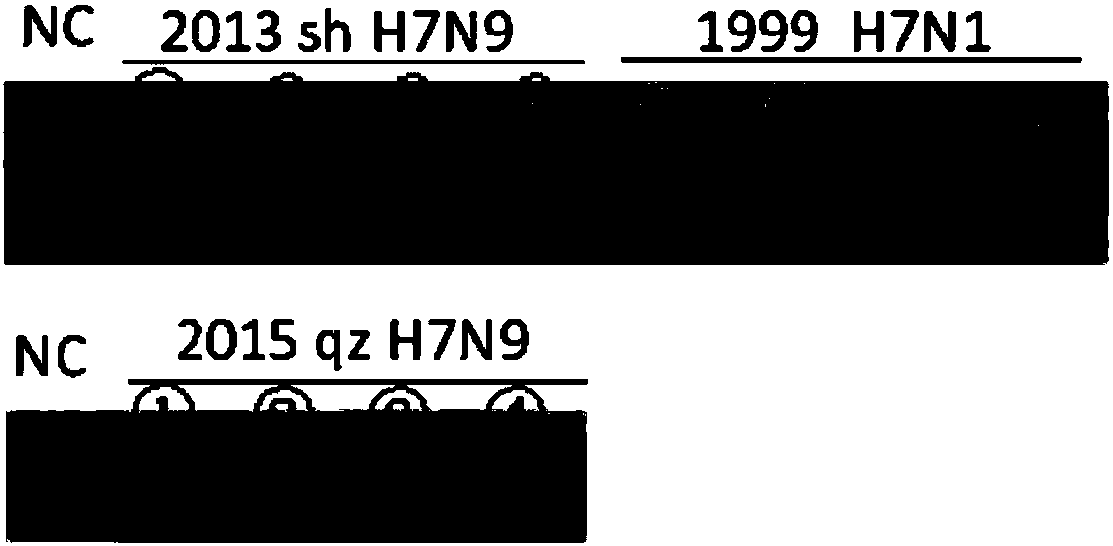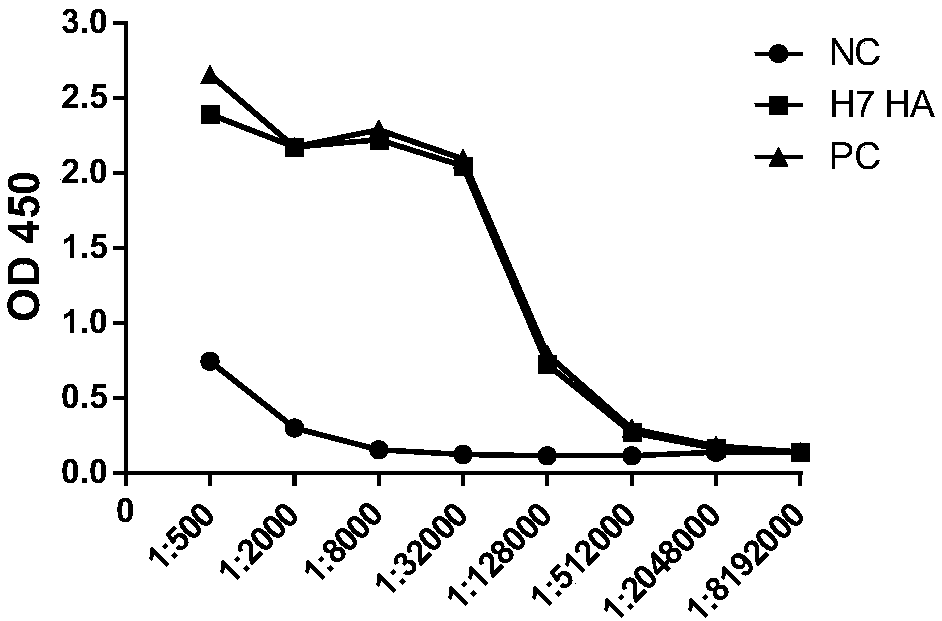Neutralizing monoclonal antibodies for resisting H7N9 influenza virus
A technology of antibody and carrier, applied in the direction of antiviral agent, antiviral immunoglobulin, antibody, etc.
- Summary
- Abstract
- Description
- Claims
- Application Information
AI Technical Summary
Problems solved by technology
Method used
Image
Examples
preparation example Construction
[0152] Preparation of monoclonal antibodies
[0153]Antibodies of the present invention can be prepared by various techniques known to those skilled in the art. For example, an antigen of the invention may be administered to an animal to induce the production of monoclonal antibodies. For monoclonal antibodies, hybridoma technology can be utilized to prepare (see Kohler et al., Nature 256; 495, 1975; Kohler et al., Eur.J.Immunol.6:511, 1976; Kohler et al., Eur.J.Immunol. 6:292, 1976; Hammerling et al., In Monoclonal Antibodies and T Cell Hybridomas, Elsevier, N.Y., 1981) or can be prepared by recombinant DNA method (US Patent No. 4,816,567).
[0154] Representative myeloma cells are those that fuse efficiently, support stable high-level production of antibody by selected antibody-producing cells, and are sensitive to culture medium (HAT medium matrix), including myeloma cell lines, such as murine Myeloma cell lines, including those derived from MOPC-21 and MPC-11 mouse tumor...
Embodiment 2
[0167] Mouse serum titer after embodiment 2 immunization
[0168] 2.1 Mice immunization, screening and serum neutralization activity evaluation
[0169] see figure 2 , take conventional immunization methods, and immunize mice. Five BALB / c female mice of 6-8 weeks in each group were intramuscularly injected with 100ug / mouse of the constructed HA DNA vaccine. Three consecutive immunizations, each with an interval of two weeks. Ten days after the third immunization, blood was collected from the orbit of the mice, the serum was separated, and the titer of the serum was determined. The mouse with the highest titer was selected for booster immunization, that is, 100 μg of HA protein was mixed with an equal volume of Freund's complete adjuvant 2 weeks after the third immunization, and the mice were immunized by subcutaneous injection after complete emulsification. After 3 days, recall stimulation was performed. Three days later, the mouse spleen was taken for cell fusion. At t...
Embodiment 3
[0174] Embodiment 3 monoclonal hybridoma cell obtains
[0175] 3.1 Preparation and screening of mouse hybridomas to obtain neutralizing antibody cell lines
[0176] According to the results of ELISA detection, the mouse with the highest antibody titer was selected as the immune cell donor. Mouse splenocytes were mixed with myeloma cells screened by 8-azaguanine, fused under PEG4000 treatment, and then added with HAT for screening. After the unfused cells died completely and the hybridoma clones grew out, the culture supernatant was collected , Antibody detection by ELISA. Select the antibody-positive and high-titer cells, perform limiting dilution, and pick out monoclonal cells. Take BALB / c mice, inject 0.5mL pristane (pristane) intraperitoneally, and then inject 0.5mL intraperitoneally after 7-10 days, the obtained monoclonal 1×10 6 Hybridoma cells, after about 10 days to 20 days, the mice grow ascites, and the ascites containing monoclonal antibodies can be obtained by ha...
PUM
 Login to View More
Login to View More Abstract
Description
Claims
Application Information
 Login to View More
Login to View More - R&D
- Intellectual Property
- Life Sciences
- Materials
- Tech Scout
- Unparalleled Data Quality
- Higher Quality Content
- 60% Fewer Hallucinations
Browse by: Latest US Patents, China's latest patents, Technical Efficacy Thesaurus, Application Domain, Technology Topic, Popular Technical Reports.
© 2025 PatSnap. All rights reserved.Legal|Privacy policy|Modern Slavery Act Transparency Statement|Sitemap|About US| Contact US: help@patsnap.com



